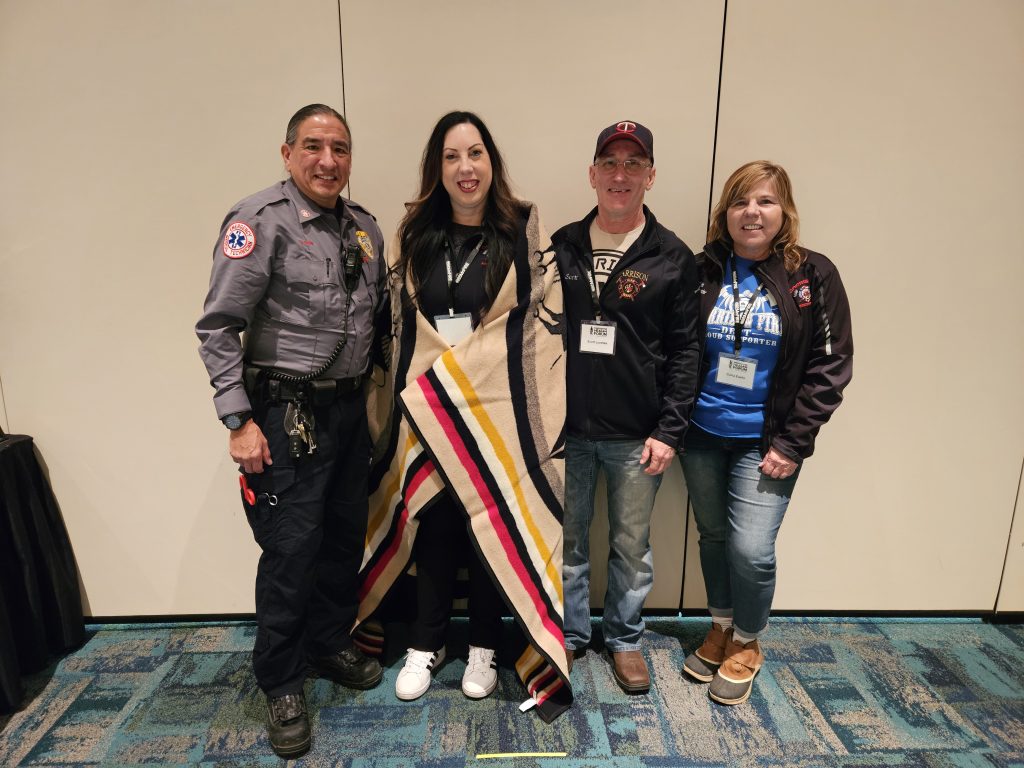Published in partnership with MnFIRE partner, Optum
Take a moment and think about your male colleagues, friends and family members. When was the last time you asked one of them how they’re feeling and doing emotionally?
For many people, including firefighters, that conversation never happens for many potential reasons. Maybe you don’t think to ask. Maybe you assume you already know (“Dad never says much”). Or maybe you did ask and they responded with something along the lines of “I’m fine, thanks. How about you?”
Despite how far conversations around the importance of mental health and well-being have progressed, men are often held to a different emotional standard than women. In some settings, social and cultural norms often deem it OK for women to be emotional, while expecting men to be stoic and control their emotions.
How gender may make a difference
While stereotypes and stigma can be difficult for anyone, pressuring men to hide their emotions doesn’t make those feelings go away — it can actually make them worse. Suppressing emotions can increase stress and anxiety, and may contribute to depression, substance use disorder and other mental health challenges.
Another important factor is that mental and physical health are intertwined and support – or can worsen – one another. Stress and mental health concerns are often linked to medical conditions like heart disease, diabetes and respiratory problems, among others, making it hard to focus on other areas of your life or to feel like yourself.
Research has shown men are more likely than women to die by suicide, often linked to depression, substance use and anxiety.1 Men also face higher death rates from chronic illnesses including heart disease and certain cancers.2
Men are also less likely to be diagnosed during regular checkups. This is partly because men are less likely to go for preventive care and partly due to clinicians’ tendency to underdiagnose or misdiagnose mental health concerns in men.
Promoting mental health awareness
It’s important to challenge the fire service’s culture of silence and encourage men to ask for help when they may need it, as emotional distress can affect daily life, work, relationships and overall well-being.
One way to help is to consider how mental health concerns might look like in men. While every individual’s experience is different, some common signs may include:
- Often quick-tempered, irritable or restless
- Escaping into work to avoid difficult feelings
- Taking bigger risks, such as reckless driving or unsafe sex
- Using alcohol, drugs or other substances more often
- Having headaches, digestive issues or other unexplained aches and pains
- Pulling away from family and friends, or losing interest in activities they once enjoyed
- Talking more than usual about stress – whether it’s related to work, money, or something else
- Thinking about death or suicide
It’s natural to experience these feelings or behaviors from time to time, but when they persist, it’s often a sign someone could use support. Whether it’s a temporary challenge or long-term struggle, mental health concerns can be treated and managed to improve well-being.
Supporting the mental health of the men in your life is important. Encouraging them to practice everyday habits that foster balance and resilience can also make a difference. Depending on their interests and needs, self-care can take many forms. Here are some ideas to get started:
- Taking time to relax and do things they enjoy
- Expressing themselves through talking, writing, art or other outlets
- Spending time in or around nature
- Striving for work-life balance
- Living within their means and/or creating and following a plan to pay down debt
- Releasing tension through fitness, sports and mindful living practices, such as martial arts, yoga or breathwork
- Building strong friendships and staying connected to loved ones and positive people
- Regularly staying active, eating nutritious foods and getting quality sleep
- Practicing gratitude by focusing on the good in life, big and small
- Nurturing a sense of purpose and meaning
Seek support through MnFIRE
For all active Minnesota firefighters and their family members, MnFIRE provides no-cost mental health support through the Hometown Heroes Assistance Program. Call our 24-hour helpline (888-784-6634) to speak with a therapist or peer supporter.
Sources
- International Association of Suicide Prevention (IASP). New WHO suicide data reaffirms urgent need for global prevention efforts. June 25, 2025.
- Global Mental Health Action Network. Need2Know — men, mental health and non-communicable diseases. June 2025.
Anxiety and Depression Association of America, ADAA. Men’s mental health. Accessed Aug. 8, 2025.
Association of American Medical Colleges. Men and mental health: What are we missing? April 2, 2024.
Cambridge Core. Gender matters: A critical piece in mental health | The Spanish Journal of Psychology. Nov. 10, 2024.
Cleveland Clinic. 11 tips for men and their mental health. May 23, 2024.
Counselling Directory. Stuck in stoicism: How bottled-up emotions can lead to anxiety. May 24, 2024.
Harvard Medical School. Half of world’s population will experience a mental health disorder. July 31, 2023.
Mental Health Foundation. Men and mental health. October 1, 2021.
Mental Health Foundation. Our best mental health tips — backed by research. Accessed Aug. 4, 2025.
Mental Health UK. Men’s mental health. Accessed Aug. 4, 2025.
Mind. UK hiding behind a ‘brave face.’ Feb. 1, 2024.
National Institute of Mental Health. Men and mental health. Accessed Aug. 4, 2025.
PMC. Males and mental health stigma. Aug. 19, 2020.
World Economic Forum. 5 ways to support men’s mental health and raise awareness. March 22, 2024.
World Health Organization. Suicide. March 25, 2025.




